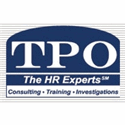These letters, referred to as "mismatch" letters, are sent when names submitted to the IRS with social security numbers do not match the name on record or when the mismatch is discovered through an audit of other employment eligibility forms (I-9). This can be caused by an error on the part of the employee, the employer or a governmental agency. It does require the employer to take action when the notice is received. Some of the most common reasons for these mismatches:
- Typographical error in data entry to payroll system or Human Resource Information System (HRIS)
- Misreading of employee handwriting on payroll enrollment forms
- Use of different name form for the same person, e.g. Tom Jackson, Jr. vs. Thomas R. Jackson, Jr.
- Marriage name changes not reported to both systems
- Use of fraudulent identification
Recently, the Department of Homeland Security (DHS) has stepped up enforcement of the Immigration Control and Reform Act which is the Act requiring employers to complete and retain I-9’s. The new focus on this issue means many more of these letters are going out.
When an employer receives such a letter, the following steps should be taken:
- Employers should not jump to the conclusion that the employee has been dishonest nor that they are in trouble.
- Employers should check files and electronic systems to be sure all of the documentation and data they have agree.
- Resolve any internal errors.
- If employer documentation shows no discrepancies, they should talk with the employees involved if they are still employed and notify them of the issue.
- The employee must contact the Social Security Administration (SSA) to research the error if there is no discrepancy found.
- The employee should receive verification from the SSA if it is an error on the part of the SSA and a receipt or letter that new documentation is being provided.
- If the employee is no longer employed, employers should still recheck all of the documents for that employee and resolve any error they find in that research.
Members may email TPO to request a copy of the "Mismatch Checklist.”
DHS has two new rules being considered (issued June 9, 2006). One of the new rules being promoted by the DHS includes a "Safe Harbor" provision for employers who respond to the letters. Employers must do the following in order to qualify for the provision:
- Check the employer’s records to ensure that the discrepancy did not result from a typographical or similar clerical error.
- Resubmit the information if a clerical error resulted in the discrepancy.
- Ask the employee promptly to confirm that the employer’s records are correct if the discrepancy cannot be resolved.
- Take steps to correct an error if the employer’s records are not right.
- Ask the worker to pursue the matter personally with the relevant agency (such as contacting the SSA) if the employer’s records are correct.
- Re-verify the individual’s employment authorization without using the documents that were the subject of the no-match letter if the employer is unable to resolve the discrepancy within 60 days of receipt of the no-match letter.
The DHS has warned that continuing to employ a worker when the mismatch cannot be resolved could be seen as "employer [having] constructive knowledge of employing an alien unauthorized to work in the U.S." This means that employers should not allow employees to continue to work if they are unable to resolve the mismatch issues.
In addition to review of documents and completion of I-9’s for new employees, employers can check for match between name and social security numbers at www.socialsecurity.gov/bso/bsowelcome.htm.
Important things for employers to remember include:
- Employers may not specify which documents from the lists provided for I-9’s an employee presents.
- Employees may not work beyond 72 hours without having provided the necessary documentation to show they are legally allowed to work.
- Only original documents are acceptable for the employer to review.
- Documents that have expiration dates (other than a US passport) must be re-verified and some sort of reminder system should be put
TPO is an award-winning firm established in 1991 made up of a group of highly experienced, nationally certified HR experts and trainers. TPO is licensed by the State of California (PI-25638) to provide investigative services. For more information, please contact us at 800-277-8448 or visit our web site www.tpohr.com.
Contents
©
2011 TPO Human Resource Management. No part of this article may be reproduced, excerpted or redistributed in any form without express written permission from TPO Human Resource Management.
No comments:
Post a Comment